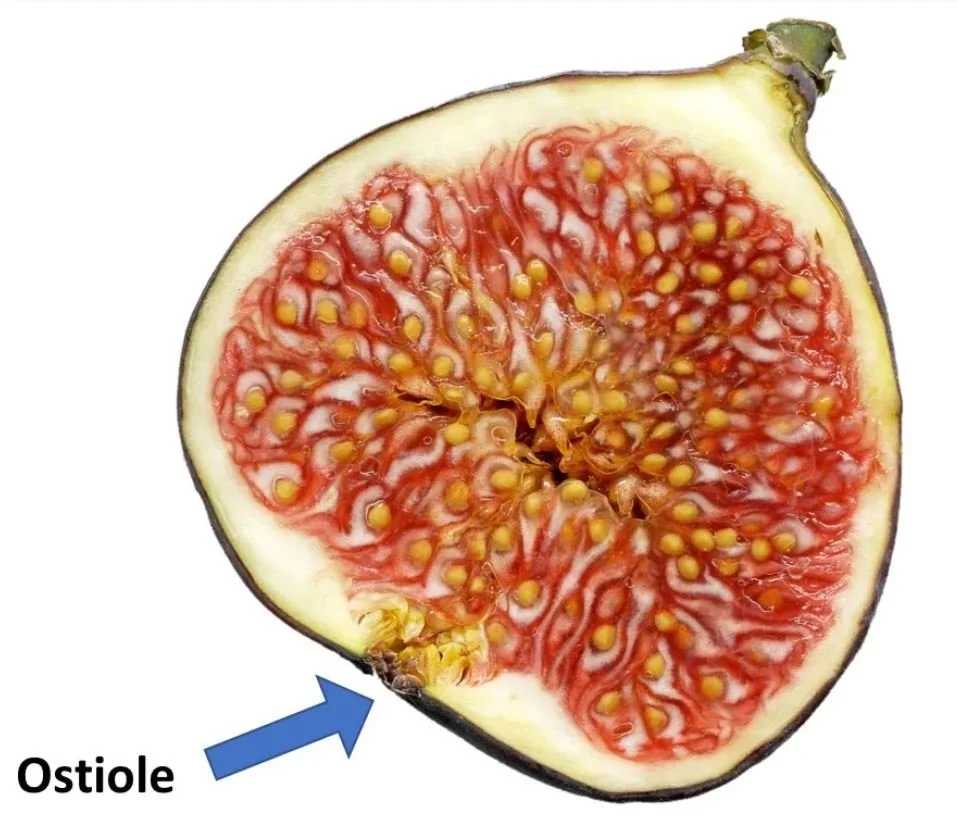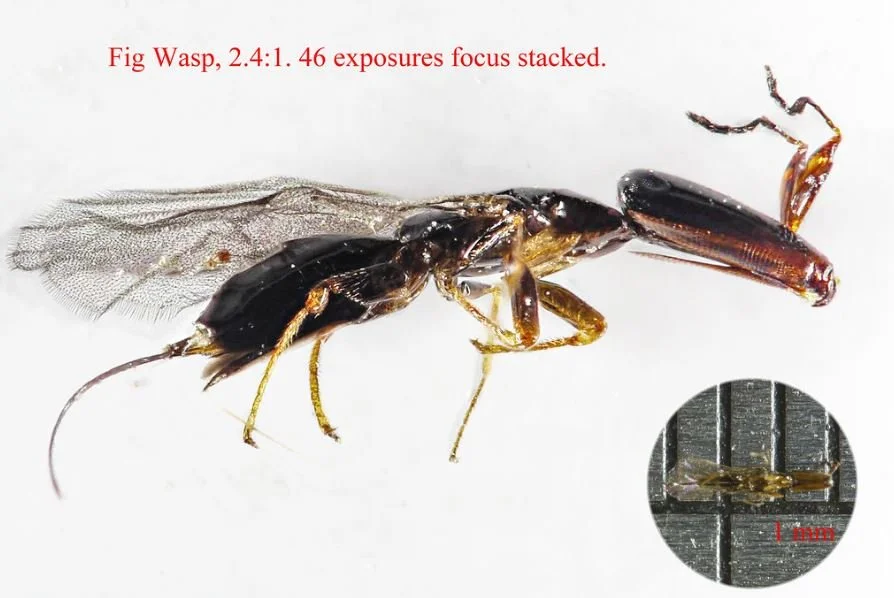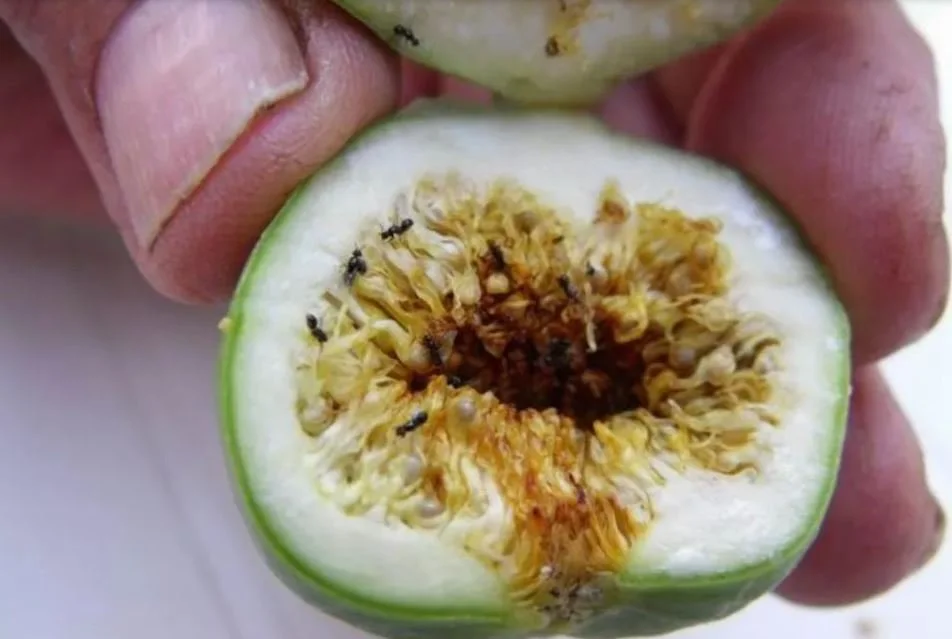Figs and Wasps, A Love Story
This page serves to accompany the podcast “Figs and Wasps, A Love Story.” Here’s a fun write-up on the subject (by Anusha Krishnan) if you’d like to take a deeper dive. I’ve also received some questions, so here are some answers:
Question: So the male wasp’s only purpose is to inseminate the female, dig a hole out for her, and then die?…
Answer: Yes, exactly.
Question: Do all figs work like this?
Answer: 100% of wild fig trees work this way. But most commercially grown/sold varieties are self-pollinated.
Question: What’s the digestive enzyme that breaks down the wasp?
Answer: It’s called “ficin,” and it breaks down the wasp so that the fig tree can use her for nutrients.
Do you have a question that you’d like to see answered here? Contact me!
The ostiole, where the female first enters the fig to lay her eggs. Source: yle-the-hacker, Wikimedia Commons
Female Fig Wasp. Note the skinny head and long, slender body (for fitting into fig holes!). Photo by Mike Gordon. [Source]
Here, you can see some hungry ants awaiting some tiny wasp victims. As science writer Anusha Krishnan describes this scene: “Oecophylla ants clean out a fig by carrying away dead and dying male wasps and any straggling females they can get their mandibles on.” [Source]
Galler Wasps are not the same as fig wasps. In this photo, you can see the Galler Wasps’ long, slender ovipositors ready to inject eggs into the figs. Since they don’t pollinate the figs or offer any other benefits, they’re considered parasitic—consuming fig resources that were originally meant for seeds and pollinators. [Source]
A visual representation of the fig-fig wasp mutualism cycle. [Source]
An immature fig, cut open to reveal baby wasps inside. [Source]





